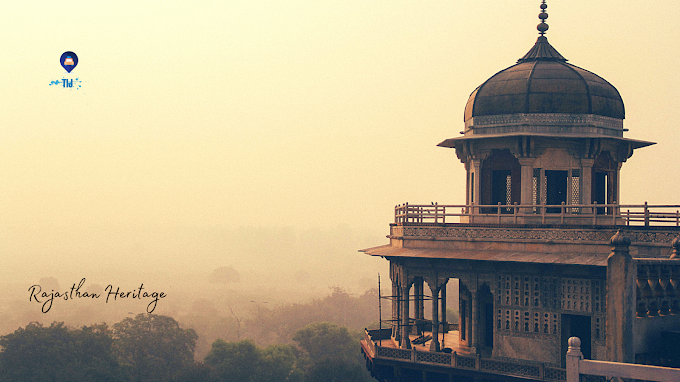Pushkar Lake | The Most Beautiful Lake of Rajasthan
Some Historical Facts about Pushkar Lake | Rajasthan
Information | Pushkar Lake
Pushkar lake perched amidst the Aravalli stages in Pushkar, Rajasthan. Surrounded by way of fifty-two bathing ghats ( a flight of steps leading to the water) and over 500 temples, it's miles appeared as the sacred lake for the Hindus in India in which pilgrims throng in massive numbers to take a holy bathtub.
Amongst those, Pushkar Sarovar or Lake is the most vast. It is believed that the lake changed into fashioned where petals of Lord Brahma's lotus fell whilst he became destroying Vajra Nabha.
Located inside the oldest town of Pushkar that's regularly called 'Tirtha-Raj' or the king of pilgrimage, the life of the lake takes one returned to the 2nd century BC. The lake witnesses millions of devotees flocking right here due to the notion that the famed waters of the Pushkar wash away the sins of the complete life. On the holiest day of Kartik Poornima, a dip inside the lake is taken into consideration identical to the blessings accumulated by means of performing yajnas (fire-sacrifices) for several centuries.
Yes ! you Can Visit More Amazing Facts about Rajasthan visit Now. and get more Discounts on amazing Package. Taxi service in Jodhpur is the Most Valuable service in Rajasthan. Car Rental in Jodhpur and Cab Service in Jodhpur is also Good for you.
Some Best Attractions About Pushkar Lake | Rajasthan
On the outer edge of the Pushkar Lake, there are numerous temples and ghats that upload to the sanctity of the region. They make it an entire paradise for religious humans. It is said that around 500 temples surround the lake, some of them had been destroyed and re-built finally. The most significant among them is the Brahma Temple committed to Lord Vishnu. Other temples placed near the lake are the Varaha Temple, Savitri Temple, and Gayatri temple.
There are fifty-two ghats near the Pushkar Lake which can be a fundamental part of it. Used for sacred bathing and rituals, ten of these ghats were declared as the 'Monuments of Sacred Importance'. There are- the Varaha Ghat, the Dadhich Ghat, Saptarishi Ghat, Gau ghat, Yag Ghat, Jaipur Ghat, Karni Ghat, and Gangaur Ghat, Gwalior Ghat, Kota Ghat. It is thought that the water of these ghats has medicinal values and can treat all the pores and skin problems. Most of the ghats had been named after the kings who constructed them. There are a few exceptions like Varaha ghat is known as on account that Vishnu regarded here inside the form of a boar. Brahma Ghat is known as seeing that Brahma bathed here. The Gau Ghat became renamed as Gandhi Ghat after Mahatma Gandhi's ashes have been immersed at this ghat.
Best Time To Visit | Pushkar Lake | Rajasthan
The best time to go to Pushkar Lake is between October to March when the winter season arrives. The temperature looms around 22 ranges Celsius which isn't always too cold. The weather stays satisfactory. The summers are sweltering with the mercury rising to forty-five ranges Celsius. In winters, you may additionally get to witness the exuberant Pushkar Fair that's held in November on Kartik Poornima.
Historical Facts | Pushkar Lake | Rajasthan
According to the inscriptions determined at Sanchi and the data made through Chinese tourist, Fa Xian, the Pushkar Lake existed even inside the second century BC. According to a tale, a Rajput king, Nahar Rao Parihar of Mandore, dipped his hand into the lake for quenching his thirst. He turned into amazed to see that the Leukoderma marks on his hand vanished as quickly as he dipped it. Astonished with the aid of the healing characteristics of the lake, he restored it, and considering then, people were journeying the lake to solve their pores and skin issues.
It is likewise said that Guru Govind Singh, the tenth Sikh guru recited Guru Granth Sahib at the banks of this lake. During the Mughal rule, the importance of the lake diminished a touch due to the pilgrim tax and ban on religious processions. However, throughout Akbar's reign, its revival befell, and the importance turned into restored.
The Rajput rulers of Amber, Bundi, Bikaner and Jaisalmer made endeavours to repair its importance and the surrounding temples. Many different rulers are answerable for the contemporary additions to the constructing of ghats and the preservation of temples like -Maharaja Man Singh I of Amber for the Raj Ghat and Man temple, Maha Rana Pratap for the Varaha temple, Daulat Rao Scindia for Kot Tirth Ghat, the Marathas-Anaji Scindia for the Koteshwar Mahadev temple and Govind Rao and the Maratha governor of Ajmer for Shiva Ghat.
Stay Tuned and Stay Safe.






0 Comments